Some sandwiches are just snacks. These are not.
Born on shipyards, factory floors, construction sites, and coal mines, the world’s most iconic working-class sandwiches weren’t designed to impress with aesthetics—they were built to fuel. Each one tells a story of grit, grind, and the simple joy of biting into something hearty enough to keep you going.
These aren’t dainty tea sandwiches or overpriced deli art projects. These are real-deal, full-throttle food meant for real hunger.
Across continents and cultures, laborers and everyday folks have engineered epic handheld meals using whatever ingredients were cheap, available, and guaranteed to satisfy. From New Orleans’ muffuletta, oozing with cured meats and olive salad, to the Vietnamese bánh mì, blending French bread with pickled vegetables and pâté, these sandwiches represent history, culture, and resilience—with every bite.
But it’s not just about size—it’s about substance. A Cornish pasty wasn’t just lunch for miners; it was a safety feature. A chip butty was Britain’s way of laughing in the face of cold, hard work. And don’t underestimate the chopped cheese—a bodega-born New York legend that packs working-class soul between its buns.
Some of these sandwiches have gone global, while others remain regional treasures passed down through generations. But all of them are united by one mission: to keep hardworking people full, energized, and moving.
So if you’re tired of overpriced “artisanal” options that leave you hungry 30 minutes later, this list is for you. These sandwiches aren’t just meals—they’re culinary blue-collar legends. Grab a napkin (or an apron), and let’s celebrate the meals that built cities, powered revolutions, and still hit like a punch in the best way possible.
1. The Muffuletta
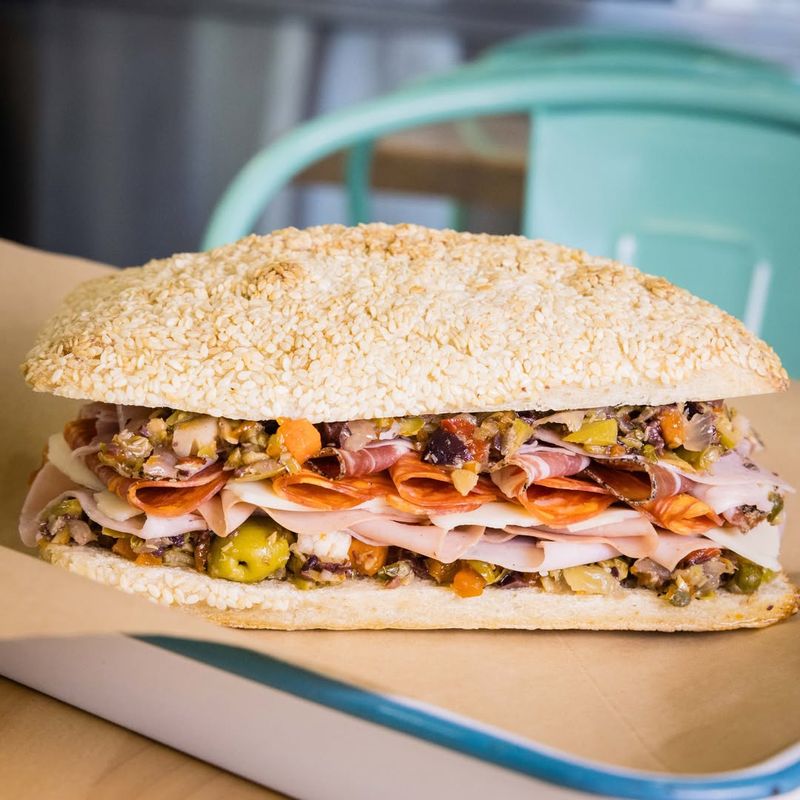
Born in New Orleans’ Italian immigrant community, this massive sandwich has powered dock workers for over a century. Layers of salami, ham, mortadella, provolone, and swiss get topped with olive salad on a round Sicilian loaf.
What makes the muffuletta special is how the olive oil from that tangy salad soaks into the bread over time. Traditionally, it’s made hours before eating so flavors can meld together perfectly.
Workers would order a quarter section for lunch – a whole muffuletta is dinner for an entire family! The Central Grocery on Decatur Street created the original version in 1906, and their recipe remains virtually unchanged today.
2. The Chip Butty

Nothing embodies British working-class food quite like the chip butty. This simple marvel consists of hot french fries (“chips” in the UK) stuffed between two buttered slices of white bread, sometimes with ketchup or brown sauce.
Coal miners in northern England popularized this carb-loaded creation as an inexpensive way to stay full during grueling shifts underground. The soft bread, crispy potatoes, and melting butter create a comfort food masterpiece that’s greater than the sum of its humble parts.
Football stadiums across Britain still serve chip butties to freezing fans on match days – proof that tradition trumps nutrition when real hunger strikes!
3. The Chopped Cheese
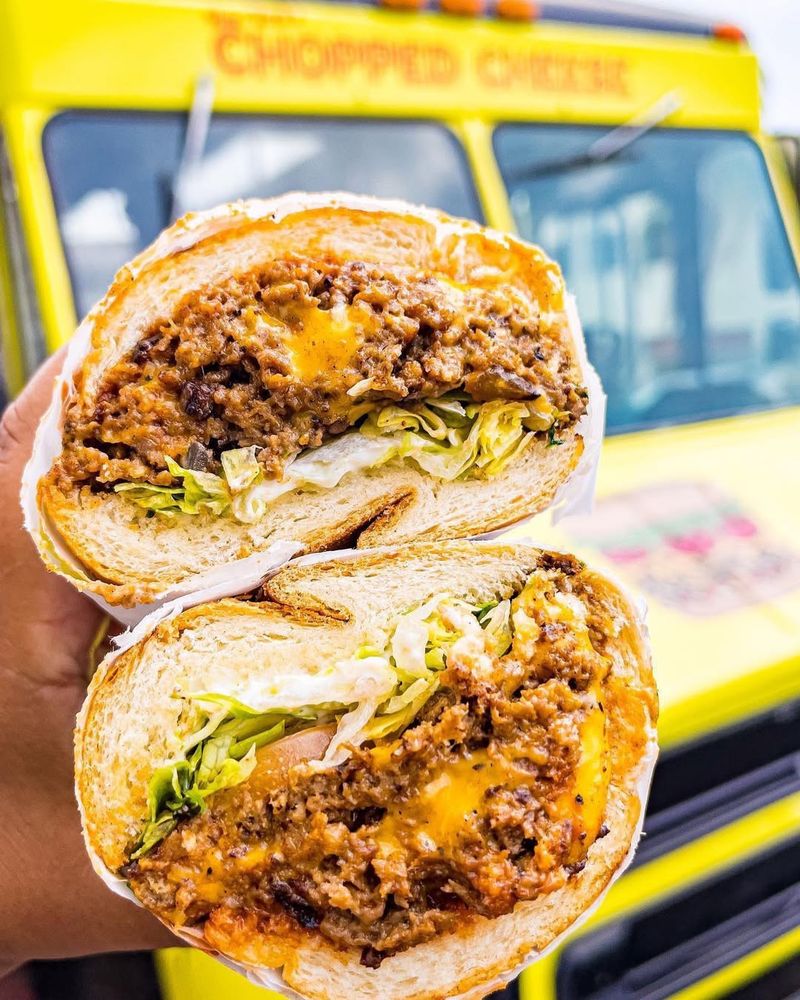
Invented in Harlem bodegas and perfected in The Bronx, the chopped cheese has fueled New York City’s working neighborhoods for decades. Ground beef gets chopped on the grill with onions, then topped with melted American cheese and stuffed in a hero roll with lettuce, tomato, and condiments.
Think of it as the working person’s Philly cheesesteak – but with its own distinct New York attitude. At just $5-7, it delivers maximum calories for minimum cost, making it perfect for laborers needing substantial fuel.
Hip-hop artists have immortalized this sandwich in countless lyrics, cementing its status as an authentic piece of urban culinary culture that resists gentrification.
4. The Pasty
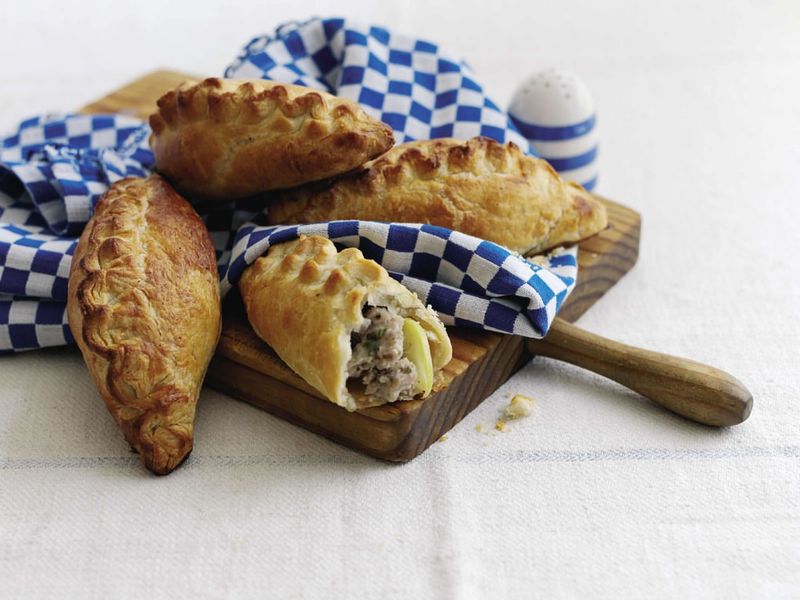
Cornish tin miners couldn’t exactly stop for a proper lunch break, so they needed something portable and filling. Enter the pasty – a half-moon pastry crust filled with meat, potatoes, onions, and rutabaga that could be carried in a pocket and eaten with dirty hands.
The thick crimped edge served as a handle that miners could hold and discard after eating. This practical design prevented arsenic and other mining contaminants from poisoning their meal.
When Cornish miners emigrated to Michigan’s Upper Peninsula in the 1800s, they brought this tradition with them. Today, pasty shops throughout the region serve these hearty hand pies to hungry workers year-round.
5. The Italian Beef
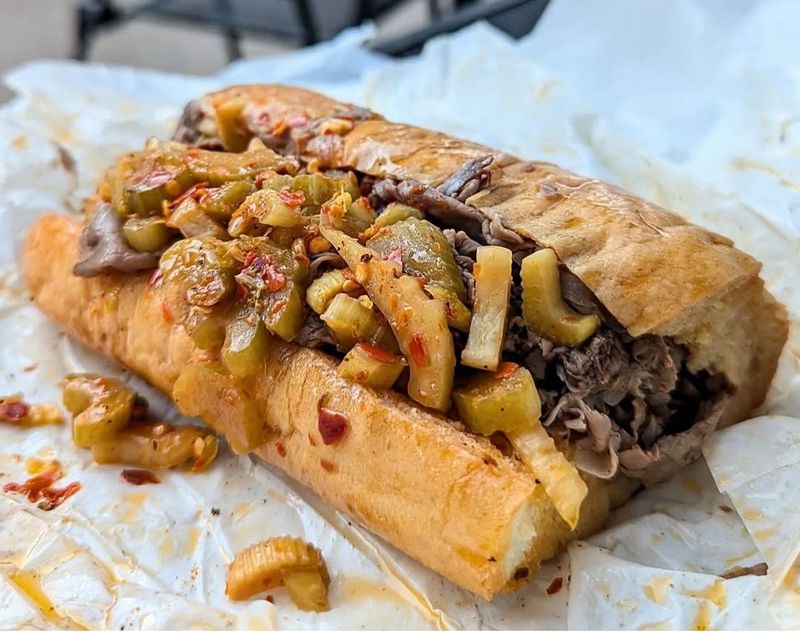
Created by Italian immigrants working in Chicago’s stockyards, this dripping masterpiece transforms tough cuts of beef into something magical. Thinly sliced roast beef simmers in herb-infused au jus before getting piled onto Italian bread and topped with giardiniera (spicy pickled vegetables).
Workers order it “wet” (dipped in jus), “juicy” (extra jus), or “soaked” (completely dunked). The resulting mess requires the famous “Italian stance” – feet apart, body bent forward, elbows out to avoid dripping on your clothes.
Portillo’s and Al’s #1 Italian Beef battle for supremacy, but neighborhood joints throughout Chicago’s working-class areas serve this affordable feast that stretches cheap meat into a filling meal.
6. The Bánh Mì

French colonialism left Vietnam with both oppression and an unexpected culinary fusion. Workers combined French baguettes with local ingredients to create the bánh mì – a perfect balance of Eastern and Western flavors that costs just a few dollars.
Crisp-crusted bread gets filled with Vietnamese cold cuts, pâté, pickled vegetables, cilantro, jalapeños, and a splash of fish sauce and mayo. The result delivers protein, carbs, and vegetables in one hand-held package.
Construction workers, street vendors, and factory employees across Vietnam and later in Vietnamese-American communities have relied on this perfect portable lunch. No utensils needed – just grab and go when the lunch whistle blows!
7. The Lobster Roll
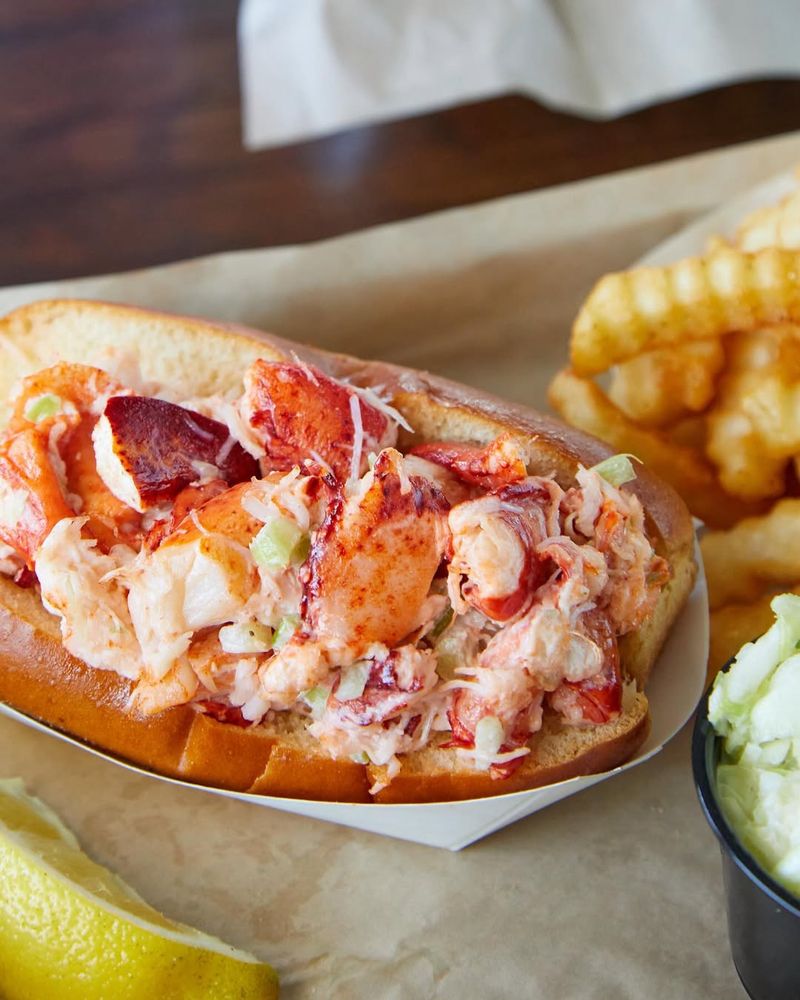
Before becoming a luxury item, lobster was so plentiful in New England that it was considered poor man’s food. Fishermen’s families would pack simple sandwiches of cold lobster meat on white bread as an inexpensive workday lunch.
Today’s version – chunks of sweet lobster meat lightly dressed with mayo or warm butter on a toasted split-top bun – evolved from these humble beginnings. Connecticut-style features warm lobster with melted butter, while Maine-style includes cold lobster with light mayo and sometimes celery.
Though now expensive due to lobster’s changed status, the sandwich maintains its working-class roots with simple preparation that lets the main ingredient shine without fancy additions or pretension.
8. The Cemita
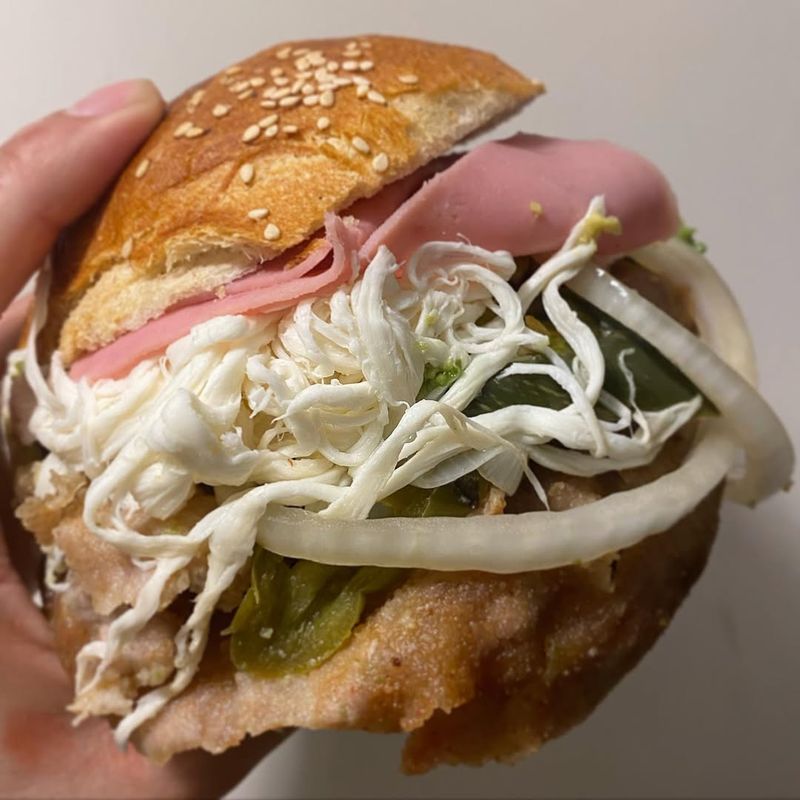
Mexican construction workers in Puebla City created this substantial sandwich to power through long days of physical labor. The cemita features breaded, fried meat (often milanesa) stacked with avocado, white cheese, chipotles, and the distinctive herb pápalo on an egg-washed sesame roll.
Unlike its cousin the torta, the cemita uses a specific round, brioche-like roll that’s sturdy enough to hold hefty fillings without collapsing. The name comes from the bread itself, which derives from the word “semita” (semolina).
Street vendors near construction sites sell these massive sandwiches that deliver enough calories and protein to sustain workers through intense physical activity at an affordable price point.
9. The Beef on Weck
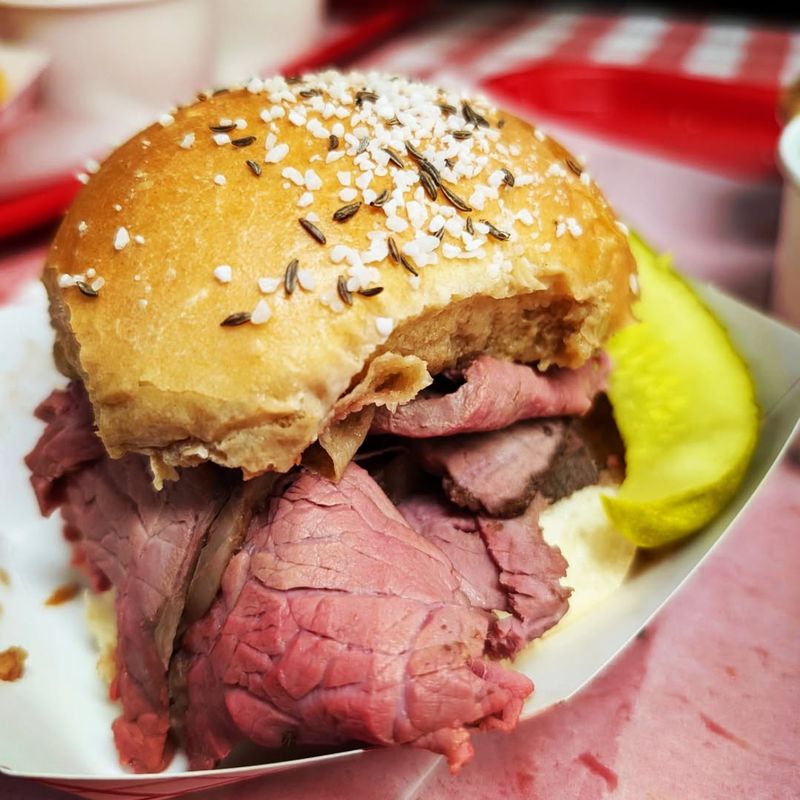
Buffalo factory workers needed something substantial to power through shifts, and the beef on weck delivered. This western New York specialty features thinly sliced roast beef on a kummelweck roll – a Kaiser roll topped with coarse salt and caraway seeds – typically served with horseradish and au jus for dipping.
German immigrants brought the kummelweck roll to Buffalo, where it paired perfectly with the region’s abundant beef. The sandwich’s popularity grew in taverns near factories, where workers stopped for a quick meal and a beer.
The salt-encrusted top encourages thirst – a clever way for tavern owners to sell more drinks while providing workers with a satisfying, protein-rich meal between shifts.
10. The Spuckie
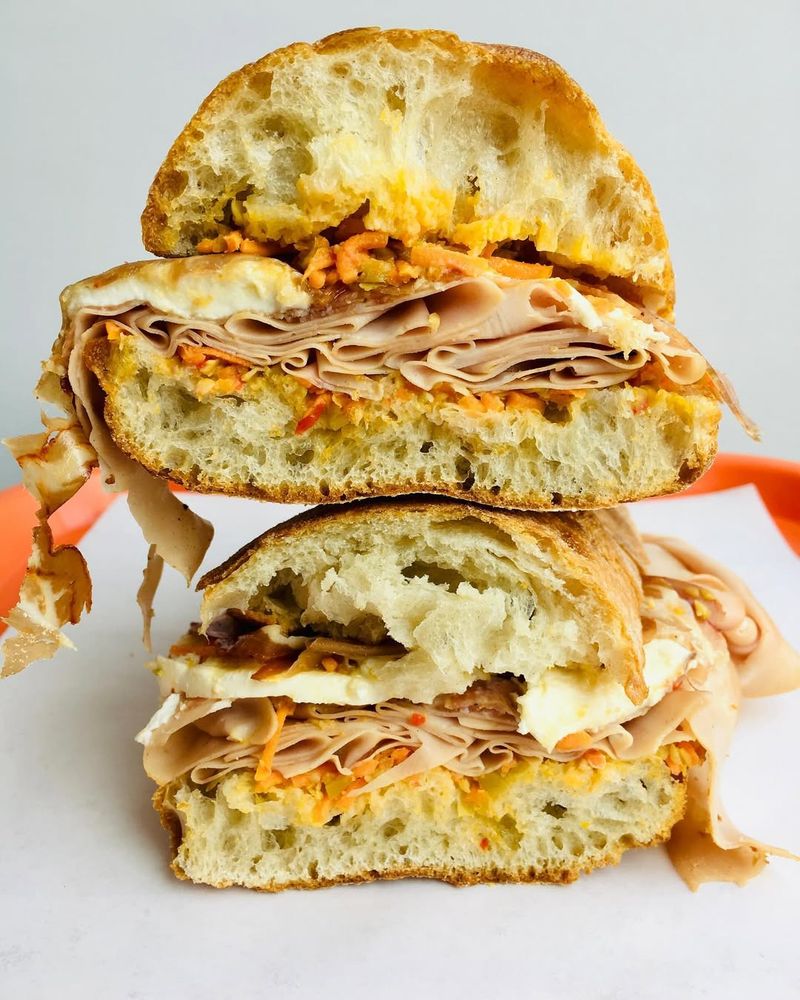
Long before “subs” and “hoagies” entered the lexicon, Boston dock workers were devouring spuckies. This Italian-American creation gets its name from “spuccadella,” the long loaves of bread used to make these hearty sandwiches in Boston’s immigrant neighborhoods.
The classic version layers salami, mortadella, ham, provolone, and marinated vegetables on a fresh-baked roll. Oil and vinegar soak into the bread, creating a harmony of flavors that improve as the sandwich sits – perfect for lunch pails.
Unlike modern chain subs with their uniform ingredients, authentic spuckies reflect the specific Italian region their makers came from. North End variations differ from East Boston ones, each neighborhood proudly maintaining its own working-class sandwich tradition.
11. The Chivito

Uruguay’s national sandwich was born to satisfy the enormous appetites of gaucho ranch hands after long days on horseback. The chivito (“little goat”) ironically contains no goat meat – instead, it’s a towering creation of thinly sliced beef, mozzarella, bacon, ham, egg, olives, and mayonnaise on a soft roll.
Ranch workers needed massive calorie intake to fuel their physically demanding jobs. This protein-packed monster delivered exactly that in a portable form that could be eaten quickly during brief breaks.
Modern versions often add lettuce, tomato, and red peppers, but the core remains the same: a celebration of Uruguay’s cattle industry that fuels the workers who maintain it. No fancy presentation – just pure sustenance.
12. The Po’ Boy
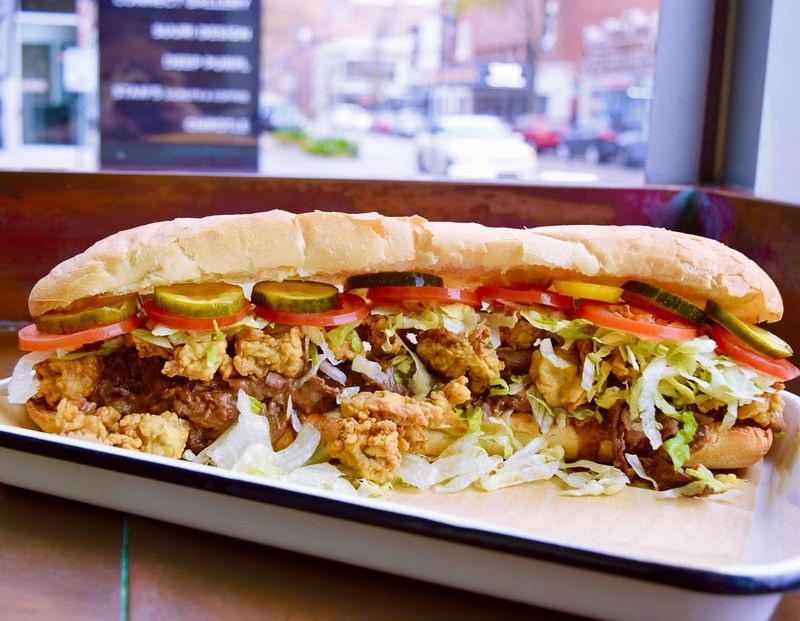
During a violent 1929 streetcar strike in New Orleans, restaurant owners Benny and Clovis Martin (former streetcar workers themselves) promised free sandwiches to their “poor boys” on the picket line. They created an affordable sandwich on French bread that could be stretched to feed many hungry strikers.
The classic version features fried seafood – oysters, shrimp, or catfish – dressed with lettuce, tomato, pickles, and mayo. Meat versions with gravy-soaked roast beef or fried potatoes for the truly broke became equally popular.
Ask for it “dressed” to get the works or “debris style” for meat with the flavorful bits that fall into the gravy during roasting – true working-class ingenuity that uses every scrap deliciously.
13. The Döner Kebab
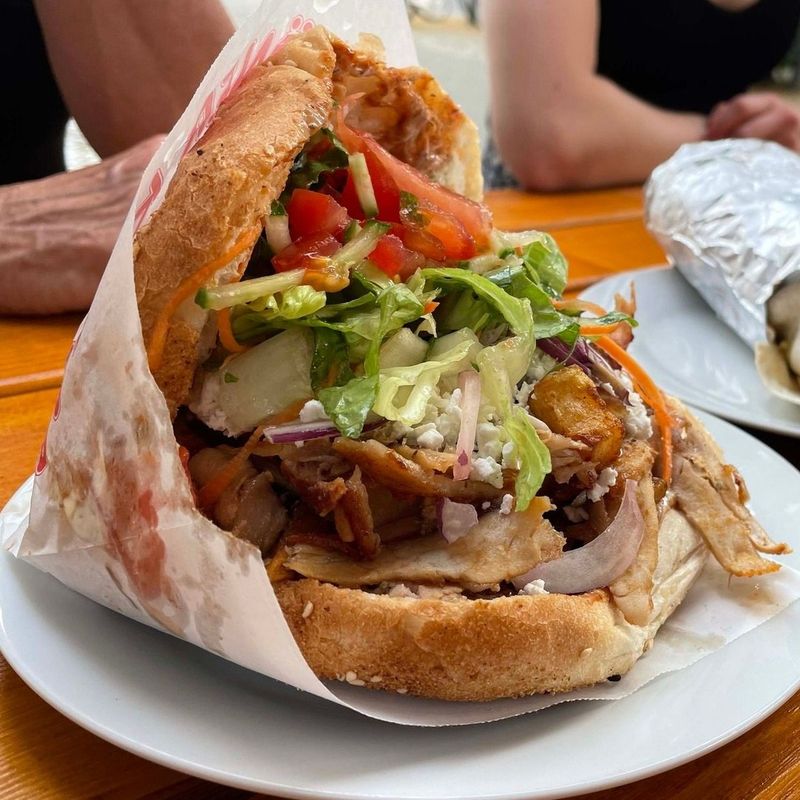
Turkish guest workers in Germany transformed their homeland’s vertical rotisserie meat into one of Europe’s most beloved working-class meals. Thin slices of seasoned lamb, beef, or chicken are shaved from a rotating spit and stuffed into flatbread with fresh vegetables, herbs, and garlicky yogurt sauce.
Construction sites and factories across Germany empty at lunchtime as workers line up at döner stands for this affordable protein hit. The sandwich provides a complete meal with meat, vegetables, and bread in one hand-held package that can be eaten quickly during short breaks.
Berlin alone has over 4,000 döner shops – more than Istanbul! This cross-cultural creation now feeds millions of European workers daily, regardless of their heritage.
14. The Pambazo
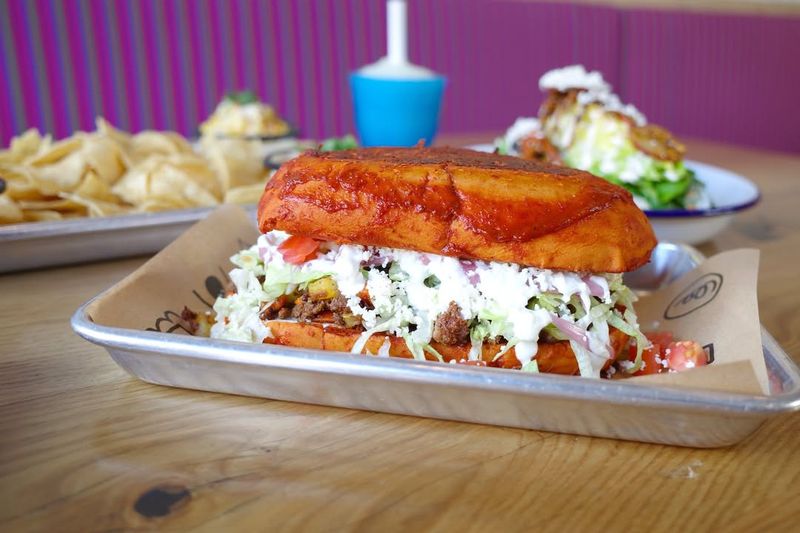
Mexican railway workers needed food that could withstand long journeys and stay intact despite rough handling. The pambazo answered with its distinctive red-dipped bread that creates a sealed exterior around hearty fillings.
The sandwich starts with a firm white roll dipped in spicy red guajillo chile sauce, then filled with potato and chorizo, shredded lettuce, crema, and queso fresco. The chile-soaked exterior forms a protective barrier that prevents leakage while adding incredible flavor.
The sandwich’s vibrant red color once marked railway workers’ hands and faces as they ate – a badge of their profession. Today, street vendors near transportation hubs continue selling these filling creations to taxi drivers, bus operators, and commuters needing substantial nourishment.
15. The Francesinha
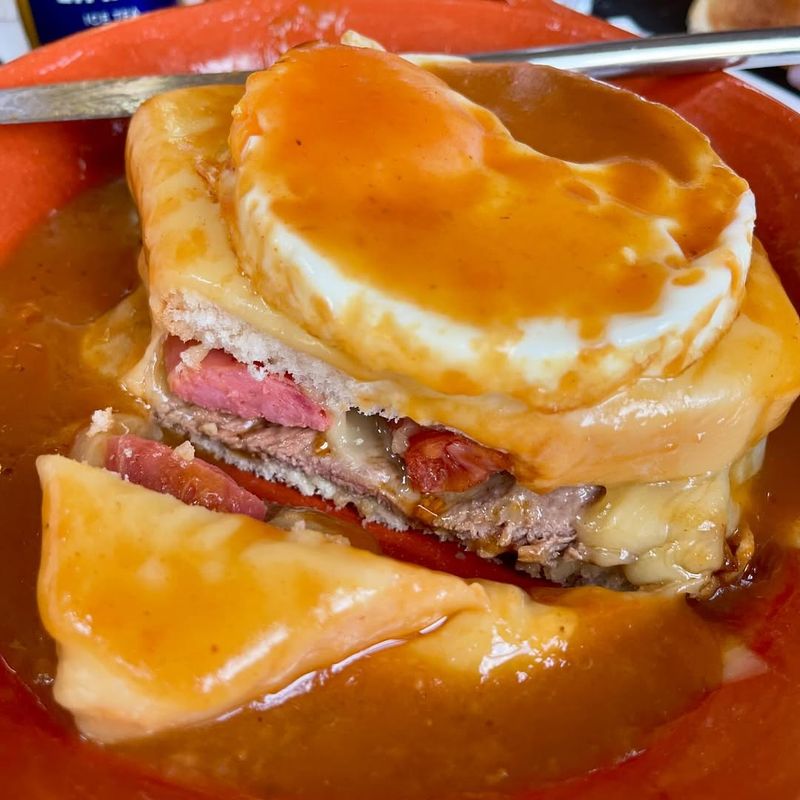
Porto’s shipyard workers didn’t just need a sandwich – they needed a fortress of calories. The francesinha (“little French girl”) is ironically one of the heaviest sandwiches ever created, featuring steak, ham, linguiça sausage, and fresh sausage between two slices of bread, covered with melted cheese and a spicy tomato-beer sauce.
French immigrants adapted the croque monsieur to satisfy the massive caloric needs of men working physical jobs in Portugal’s cold, damp shipyards. Many versions come topped with a fried egg and surrounded by french fries for even more energy-dense fuel.
Workers typically eat this knife-and-fork behemoth just once daily – it provides enough calories for an entire day of heavy labor!
Leave a comment